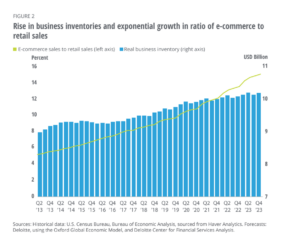The Industrial Property Diamond in the Rough
January 17, 2024 – Atlanta, GA | In the dynamic landscape of commercial real estate, the industrial market stands out as a sector that is both susceptible to threats and brimming with opportunities. Working exclusively in the Industrial store asset class, SIG Investment Advisor Solomon Colvin III has a good pulse and keeps a close eye on industry trends and data. With changing consumer preferences and advancements in technology, Industrial operators and investors alike must navigate a rapidly evolving market to stay competitive and capitalize on emerging trends.
Since 2020, the value of the supply chain has become abundantly clear. The pandemic shed light on the industrial sector and got the attention of investors. Now, everyone wants to own a piece of industrial real estate and this increase in activity means that many of the low-hanging opportunities, in the obvious locations, are scarcer. However, opportunities for good deals still abound if you have the right industry experts advising you.
Industrial investment in 2024 means analyzing market changes and consumer habits to pinpoint the “diamond in the rough” opportunities.
An Evolving Evergreen Need
Several factors have come together to put and keep industrial property on its trajectory as a worthwhile investment.
Over the last few years, we’ve been consistently reminded how crucial logistics is (remember the ship stuck in the Suez Canal?) and by extension, how strong logistics and transport-related properties are as a long-term investment. By 2022, industrial was the second largest asset class after multi-family, attracting over $142 billion in investment. Inventory grew to keep pace with demand across multiple industries, and vacancies dropped. At SIG, we continue to see this across the national market with demand from both new and returning tenants. We’re seeing a range of cap rates going up to 10% and higher, indicating the flexibility and desire to transact in the market.
Second, the acceleration of e-commerce during the pandemic changed the industrial property landscape today. Logistics, supply chain, and access to markets across the US, especially over the last mile, are key revenue drivers and fundamental to business growth. So, it’s no surprise that the demand for industrial property and investment in major ports and transport hubs climbed in parallel.
As consumer spending shifts online, so does the need for more efficient processing and shorter delivery times. This drives demand for industrial property, especially technologically advanced warehouses, in locations closer to the last mile.
Finally, while it was relatively late to the triple net lease model, the industrial sector is catching up, with the average investor finding the deals attractive, given the types of properties within the sector. Owner-operators realize the benefits of net lease structures and are open to new, innovative, mutually beneficial deal structures, so new inventory is entering the market.
Find the Diamonds in the Rough
While the obvious locations for industrial property investments are the major transport hubs: Dallas/Fort Worth, Houston, Chicago, Los Angeles, etc., where do you find these untapped opportunities? That’s where your industry experts come in. Using their years of market experience, they can identify the value of property located outside of the top MSAs in the country.
Smart Deal-Making
A strategic advisor can also help you navigate the various options for structuring a deal. We are seeing high cap rates balancing high interest rates, and other deal configurations across the asset class that support different investment goals.
Our philosophy at Sands Investment Group is to connect the dots between CRE transactions and real people and life. This applies here too: with the right strategic advice from their brokers, investors will find their industrial diamonds in the rough and the path to yield and a return. Great industrial deals will continue to cross the finish line in 2024 and beyond.
See the article here as published in Wealth Management 2024 Market Outlook.


















Leave a Reply
Want to join the discussion?Feel free to contribute!